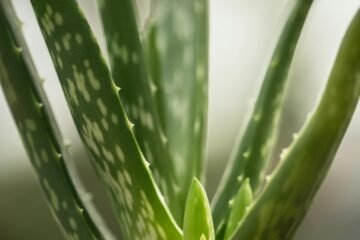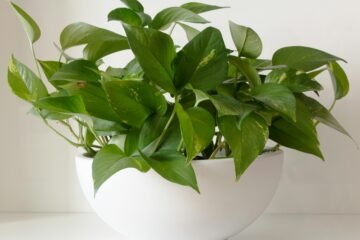Looking for a easy to care plant who gives you pleasure and happiness in your life



If you are passionate about gardening but you have a busy schedule like me, and you are afraid of giving that much time to the plants and taking care of them.That’s why you can’t start your gardening right now. The ZZ plant is the perfect solution for me. I think it will help you to trust me.
ZZ Plant (Zamioculcas zamiifolia) is mostly popular in office and houseplant for undemanding green collection. Its common name is ETERNITY PLANT.
It inspires me to live like a brave man in my life, because it has upright growth, shiny, oval-shaped, deep green leaves. Most unique part is hard to kill, like it wants to tell me never to be afraid to try once again in your life. ZZ Plant is a good choice for me and almost every indoor environment, not that it is toxic to people and pets.
Common Name: ZZ Plant, Zanzibar Gem, Eternity Plant, Aroid Palm
Botanical Name: Zamioculcas zamiifolia
Family: Araceae
Plant Type: Tropical perennial
Mature Size: 2- to 4-feet tall and wide
Sun Exposure: right to low indirect light
Soil Type: Well-draining
Soil pH: 6.0 – 7.0
Bloom: Time Spring
Flower Color: Yellow-brown spadix
Hardiness Zones: USDA 9 to 10
Native Area: Eastern Africa
Toxicity: Toxic to people and pets
How To Grow ZZ Plant


Growing ZZ plants (Zamioculcas zamiifolia) is a rewarding experience for both novice and seasoned gardeners. Known for their hardy nature and striking appearance, ZZ plants can thrive with minimal effort. Here’s a comprehensive guide to help you grow these resilient beauties effectively:
Choosing the Right Spot
ZZ plants are highly adaptable but prefer bright, indirect light. They can also tolerate low light conditions, making them perfect for offices or shaded corners.
Pot Selection
Select a pot with drainage holes to prevent waterlogging. ZZ plants prefer being slightly root-bound, so choose a pot that isn’t too large.
Soil Requirements
Use a well-draining potting mix. A blend of cactus soil and perlite works wonders, ensuring the roots don’t stay soggy.
Watering Routine
Watering is the most crucial aspect. ZZ plants are drought-tolerant and prefer to dry out between waterings. Water thoroughly, allowing excess water to drain, and let the soil dry completely before watering again.
Humidity and Temperature
ZZ plants thrive in average household humidity. They prefer temperatures between 60-75°F (15-24°C). Avoid placing them near drafts or sudden temperature changes.
Fertilizing Tips
Feed your ZZ plant with a balanced liquid fertilizer diluted to half strength once a month during the growing season (spring and summer). Avoid over-fertilizing, which can damage the plant.
Pruning and Maintenance
Prune yellowing or damaged leaves to maintain the plant’s appearance and encourage new growth. Wipe the leaves with a damp cloth occasionally to keep them dust-free.
Repotting
Repot your ZZ plant every 2-3 years or when it outgrows its pot. This is best done in spring. Handle the roots gently to avoid damage.
Pest Management
ZZ plants are relatively pest-free. However, occasional issues with spider mites or mealybugs can occur. Treat them with insecticidal soap or a mixture of water and mild dish soap.
Propagation
ZZ plants can be propagated through leaf cuttings or division. Leaf cuttings take longer but are quite simple: cut a healthy leaf, let it dry for a day, then plant it in moist soil.
Final Thoughts
Patience and minimal care are key to growing ZZ plants. Their robust nature makes them perfect for beginners, and with these tips, your ZZ plant will flourish, adding a touch of green elegance to your space.
Types Of ZZ Plants
There are several types of ZZ plants, each with unique characteristics that make them stand out. Here are four popular varieties:
1. ZZ Plant (Zamioculcas zamiifolia)
This is the classic variety most people are familiar with. It features glossy, dark green leaves that grow in a symmetrical, feather-like pattern. This plant is well-known for its low-maintenance nature and resilience in various lighting conditions.
2. Raven ZZ Plant (Zamioculcas zamiifolia ‘Raven’)
The Raven ZZ plant is a striking cultivar known for its deep purple-black foliage. New leaves start off bright green and gradually darken to their signature raven hue as they mature. This dramatic color change adds a unique aesthetic appeal to any space.
3. Zenzi ZZ Plant (Zamioculcas zamiifolia ‘Zenzi’)
The Zenzi ZZ plant is a dwarf variety with a more compact and dense growth habit. Its leaves are smaller and curl slightly, creating a lush, bushy appearance. Zenzi is perfect for smaller spaces or as a tabletop plant.
4. Variegated ZZ Plant (Zamioculcas zamiifolia ‘Variegata’)
This rare variety features variegated leaves with splashes of creamy white, light green, and yellow mixed with the typical dark green. The variegated ZZ plant is highly sought after by plant enthusiasts due to its unique and eye-catching foliage patterns.
These varieties offer a range of colors, sizes, and leaf patterns, making the ZZ plant family diverse and exciting for any plant love
Common Problems in ZZ Plants and How to Fix Them
As a gardening expert with over a decade of experience cultivating ZZ plants, I’ve encountered various issues that can affect these otherwise hardy plants. Here are six common problems and their solutions to help you keep your ZZ plants healthy and thriving:
Yellowing Leaves
Cause: Overwatering is the most common reason for yellow leaves. ZZ plants prefer their soil to dry out between waterings.
Solution: Allow the soil to dry completely before watering again. Ensure the pot has proper drainage and consider using a well-draining soil mix.
Brown Leaf Tips
Cause: Low humidity, underwatering, or too much direct sunlight can cause leaf tips to brown.
Solution: Maintain moderate humidity levels, water consistently, and place your ZZ plant in bright, indirect light rather than direct sunlight.
Root Rot
Cause: Overwatering and poor drainage can lead to root rot, a severe condition that can kill the plant.
Solution: Check the roots for rot by gently removing the plant from its pot. Trim away any affected roots, repot in fresh, well-draining soil, and adjust your watering routine to prevent future issues.
Leaf Drop
Cause: Sudden changes in temperature, drafts, or inconsistent watering can cause leaves to drop.
Solution: Keep your ZZ plant in a stable environment with consistent temperatures and watering schedules. Avoid placing it near drafts or vents.
Pests (Spider Mites, Mealybugs)
Cause: Although ZZ plants are generally pest-resistant, they can occasionally attract spider mites and mealybugs.
Solution: Inspect your plant regularly and treat infestations early with insecticidal soap or a mixture of water and mild dish soap. Wipe the leaves to remove pests and prevent further spread.
Stunted Growth
Cause: Lack of light, poor soil quality, or nutrient deficiencies can lead to stunted growth.
Solution: Ensure your ZZ plant receives adequate indirect light. Use a well-balanced, diluted liquid fertilizer during the growing season (spring and summer) and repot the plant with fresh soil if necessary.
By addressing these common problems promptly, you can ensure your ZZ plants remain healthy and vibrant.




0 Comments